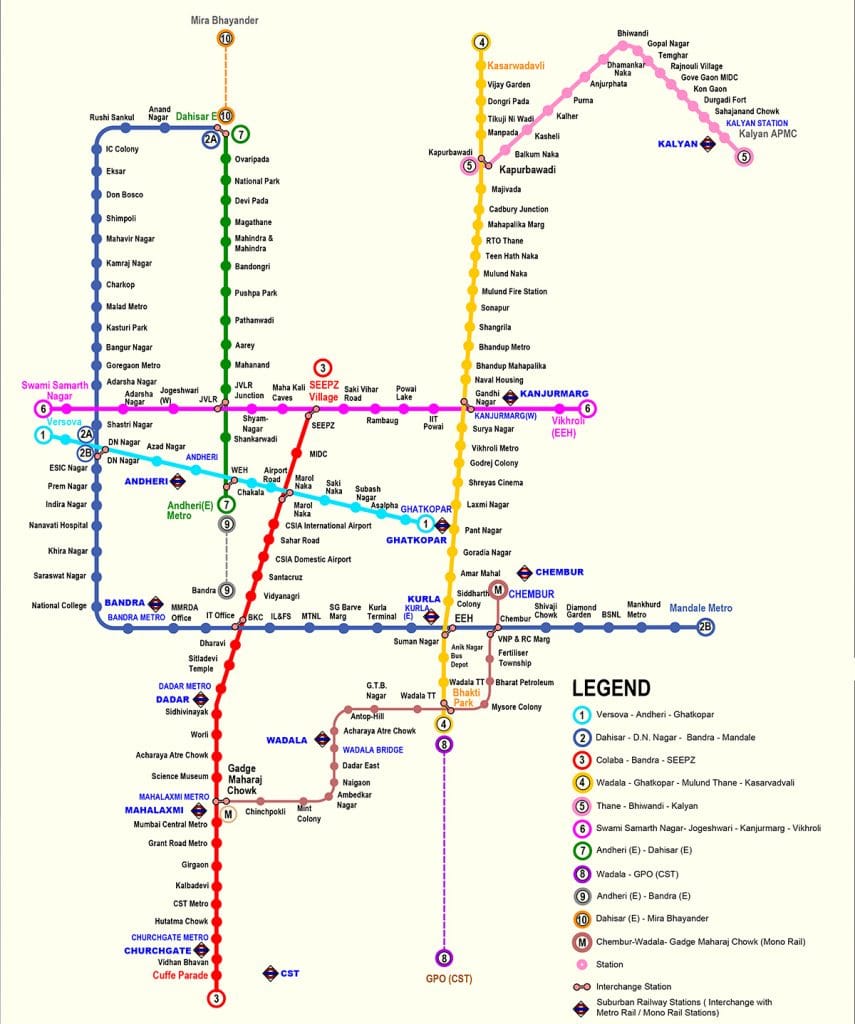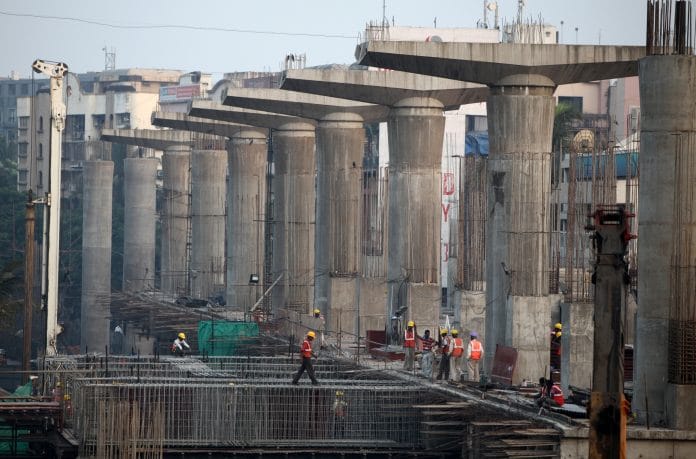It took six years to complete just an 11-km route in the first corridor, now the government is trying to fast-track work on the next three projects in Mumbai.
Mumbai: More than three years after Mumbai got its first metro corridor — a mere 11.4-km route that took six years to build — work on three more lines are on the fast track. Equipped with lessons from the construction of the first corridor, bureaucrats are this time optimistic about meeting deadlines — December 2019 for two lines and 2021 for the third one.
“We are trying to do things differently this time. We are trying to make both our staff and the contractors feel that they are stakeholders in the project,” Pravin Darade, additional metropolitan commissioner of the Mumbai Metropolitan Region Development Authority (MMRDA) told ThePrint.
Darade oversees the construction of two of the three lines.
“Earlier, there was a tendency to pass the buck. Whether it is securing approvals for cutting trees or fighting litigation, we are actively helping contractors sort out issues. I also hold a review every Wednesday to ensure we are on track,” he added.
The first metro corridor, which runs from the western suburb of Versova to Ghatkopar in the east, was built on a public-private partnership model, while the ones under construction now are on an ‘engineering procurement contract’ basis. Under an engineering procurement construction contract, the contractor is expected to design, build, commission and handover the project. The contractor does not have to put in any equity into the project and gets regular payments on raising bills.
There were multiple hurdles before the first corridor. Although then PM Manmohan Singh performed a ground-breaking ceremony in 2006, the construction started two years later and the line started operations in 2014. Factors such as constant conflicts between MMRDA and the concessionaire, delays in getting a clear right of way, procedural hurdles in getting approvals from various agencies and cost-escalations resulted in a six-year timeline.
Darade said MMRDA has also adopted a policy of clearing 80 per cent of the bill amount within two days of the contractors raising a bill, and 100 per cent within five working days to ensure there is no fund crunch for the project.
Officials say the chief minister’s ‘war room’ for infrastructure projects has immensely helped in addressing issues that used to earlier be the main reasons for delay. Every once in a while, CM Devendra Fadnavis himself chairs a meeting of the war room to review progress made on crucial projects, giving orders to clear hindrances and making all government departments work in cohesion.
Ashwini Bhide, managing director, Mumbai Metro Rail Corporation (MMRC), the nodal agency for the underground section (the Colaba-SEEPZ corridor), said, “Factors related to approvals, resource mobilisation, clearance from the railways and airports — which caused delays earlier — have been addressed. The state government has also been taking major policy decisions to complete the project in a time-bound manner.”

Why Mumbai needs Metro network
Mumbai is largely a linear city. But new hubs have come up that demand stronger east-west connectivity. The existing suburban railway network is overburdened with 75 lakh passengers using it daily and is running at 2.6 times the network’s capacity.
The condition of the BEST-run public buses is poor. Besides, badly-designed routes and lack of punctuality have brought down the number of regular commuters to 29 lakh from 42 lakh in a decade.
With about 30 lakh private vehicles, the city’s 2,000-odd km road network is insufficient to cater to its 1.2 crore people, and high-speed, well-connected mass transit systems are the need of yesterday.
Thirteen years ago, the then Congress-NCP state government drew a metro master plan, promising to erect a 146-km network by 2021. Regulatory hurdles and conflicts with the concessionaire delayed the first corridor and prevented the second proposed corridor from taking off.
When CM Fadnavis took charge, he revisited the entire metro master plan and tweaked proposed corridors such that they can be completed at the earliest. He even set an ambitious target of creating an over 100-km network in five years.
The three lines currently under construction include one 33.5-km underground line from Colaba to SEEPZ with a 2021 deadline, and two lines in the western suburbs from Dahisar to Andheri. One travels 18.5 km from the west and the other 16.5 km along the highway in the east, both with a December 2019 deadline.
A fourth line in Navi Mumbai that was due for a 2015 completion is now likely to be ready by December 2018.
Experts have criticised the master plan with more than half the corridors being north-south aligned when poor east-west connectivity is the real problem. Questions have also been raised over the under-construction Dahisar East-Andheri East line for being planned along the arterial Western Express Highway and not having stations near residential areas.
The hurdles
Bhide said red-tape is not so much of a problem anymore, and new issues have cropped up that are not regulatory, but are created by members of the civil society.
“The over-enthusiasm of activists, the advent of social media that allows misinformation to spread rapidly — all these create bottlenecks in execution,” she added.
The Colaba-SEEPZ underground corridor is facing the maximum opposition from people. Activists and politicians are stringently opposing the plan for a car depot at the ecologically sensitive Aarey Colony, one of the city’s few large green lungs.
Besides, there are three court cases going on against the project — over issues of noise pollution, restriction in movement of fire tenders as well as perceived threat to heritage buildings due to tunnelling and drilling work.
D. Stalin, director of NGO Vanashakti that is at the forefront of the ‘Save Aarey’ campaign, slammed Bhide’s remarks. “The MMRC has not satisfactorily explained why other barren sites are not suitable for the car shed when we have shown documentary evidence of there being wildlife in the part of Aarey Colony where it wants a car depot.”
He also alleged that MMRC has been giving conflicting figures for the number of trees to be affected.







According to the print they should form a government which would be better than any government in the world
Metro 7 needs to be connected to Metro 3 at BKC so as to provide a seamless travel experience from SoBo to the Western Suburbs.
Also Metro 4 should be connected to Metro 1 at Ghatkopar Railway Station